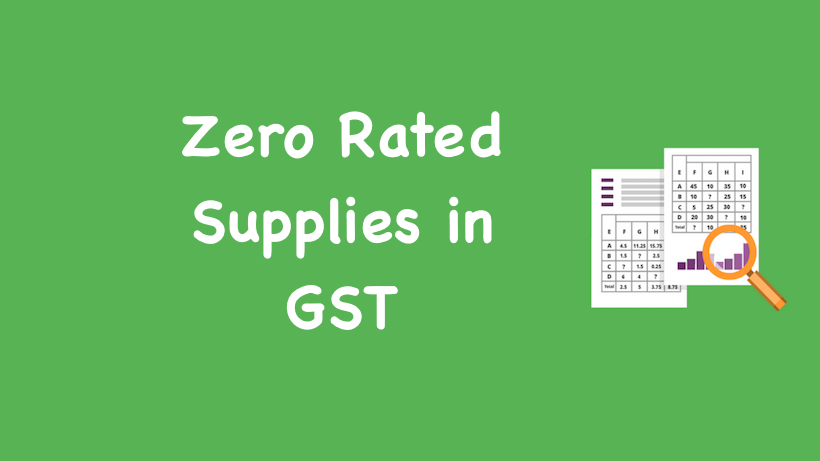Zero Rated Supplies in GST 2021: The concept of zero rated supply in the context of the Indian GST system revolves around supplies of goods and services which are either exported or are used for specified export supplies.
Section 16 of the IGST Act defines zero rated supplies in respect of the following:
- Export of goods or services or both;
- Supplies of goods and or services to SEZ developer or a SEZ unit
Section 54 of the CGST Act provides two options to a supplier of zero rated supplies which are as under:
- Claim refund of the accumulated input tax credit availed on the inputs and input services used in the zero rated supplies
- Pay IGST on the zero rated supplies and then claim a refund of the IGST paid
Thus, a holistic reading of the definition of zero rated supplies together with the refund provisions suggest that the present GST law ensures that exports of goods and services are without any incidence of GST. This when compared with the pre GST indirect tax legislations reveals that the concept of zero rating of exports did prevail either through exemptions and or refunds in respect of the Central and State levies.
Advertisement
The objective of this article is to compare the Indian GST system with the other matured Indirect tax jurisdictions namely the United Kingdom (UK) on the concept of zero rating.
Zero Rated Supplies in GST
The UK VAT defines zero rate supplies in the context of specified goods and services which attract a VAT rate of 0%. However, the supplier of such goods and services is eligible to claim credit of the input taxes in respect of his business. Thus, the mechanism of zero rated supply does ensure that the end consumer is able to enjoy certain goods which have social importance without the incidence of VAT.
It is in this context that our lawmakers could possibly expand the net of zero rated supplies. A case in point is that of the health sector. While basic health services do not come under the purview of GST, however, the suppliers of such services do bear significant proportion of GST in respect of the capital goods, inputs and input services required for these services. Thus, the cost of health services in India does have an incidence of GST albeit the same is hidden to the users.
A similar situation prevails in case of agricultural products such as seeds. A company engaged in developing of seeds also bears the incidence of GST while procuring capital goods and input services required in connection with development and distribution of seeds. It is understood that a significant proportion of cost of seed companies comprise of indirect taxes and with the rate of GST on services being higher than that of pre GST regime; it is expected to have an incremental effect on such cost.
As both health services and seeds are not subject to GST, these supplies are regarded as non GST supplies. From an input tax perspective, the GST provisions preclude such suppliers from availing input tax credit and thus the GST on input supplies becomes an irrecoverable cost for such suppliers. It is also important to mention that the situation in the pre GST regime was not different and indirect taxes did remain a factor to consider for these businesses.
Agriculture and health sectors occupy primary importance in the Government’s policy making. The importance of the agriculture sector in India cannot be over emphasized and the policy initiatives of the Government do amplify such importance. In addition, enabling affordable health services for the population at large has also been a key agenda on the Government’s welfare mission.
GST is a transformational reform India which is expected to have significant impact on the economy both in the short and long run. The structure of Indian GST is largely founded on the principle that indirect tax should be a pass through for business. It is here, that the author feels that GST could possibly be oriented towards the welfare of farmers and the patients.
The definition of zero rated supply could be expanded to include supplies of agricultural seeds and basic health services. This would enable availment of Input Tax Credit at the hands of these suppliers and reclaim the input taxes against other taxable supplies. Alternatively, a refund mechanism of the input taxes would also enable these suppliers to recover the GST paid on their input supplies and thus effectively reduce the cost of these goods and services.
The Government’s proactive approach during and after introduction of GST has caught the attention of trade and business at large. Thus, days may not be far when we may witness some pragmatic steps from the Government when GST could also act as a welfare measure for the most important areas of the economy.
Recommended Articles
